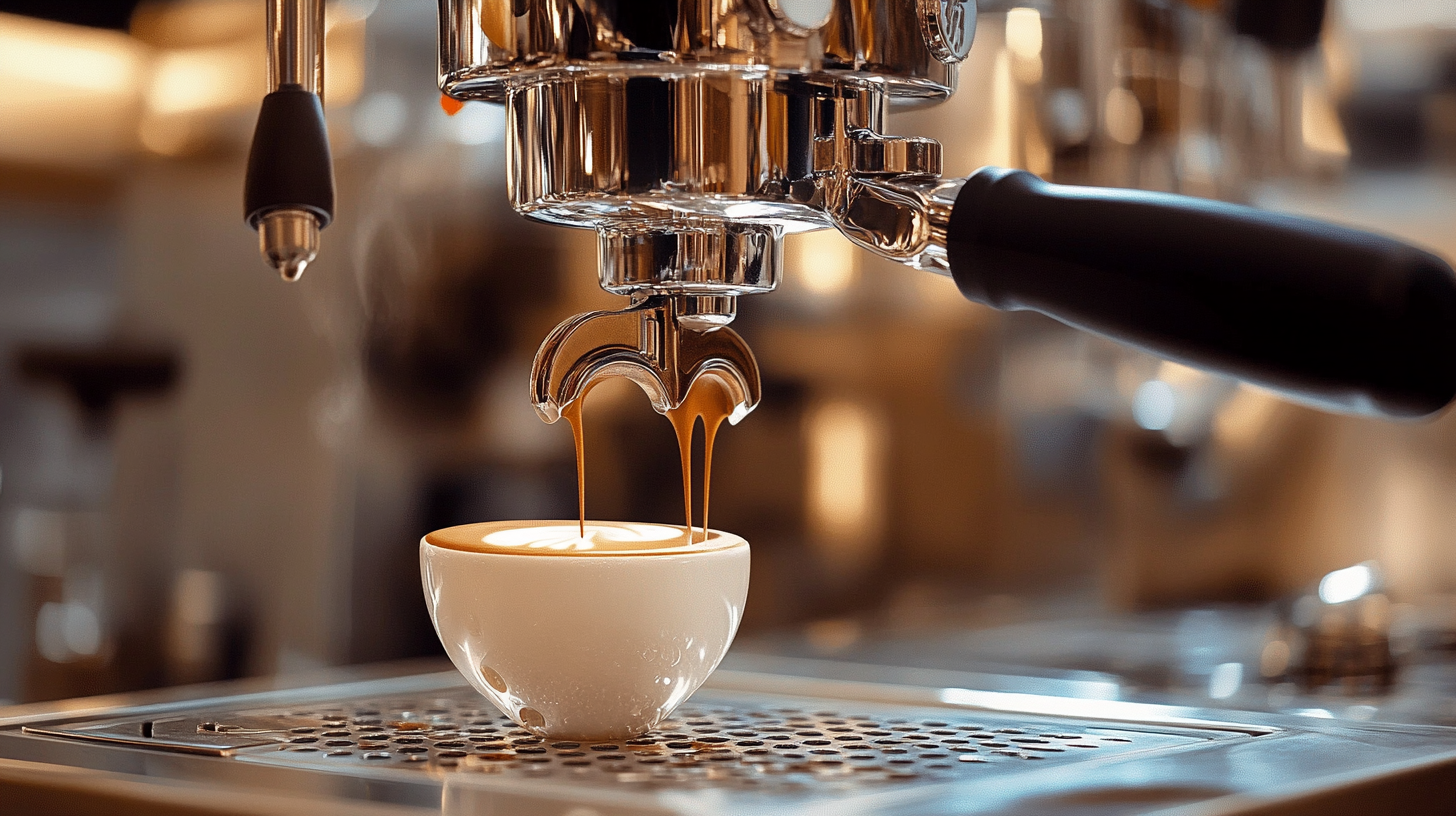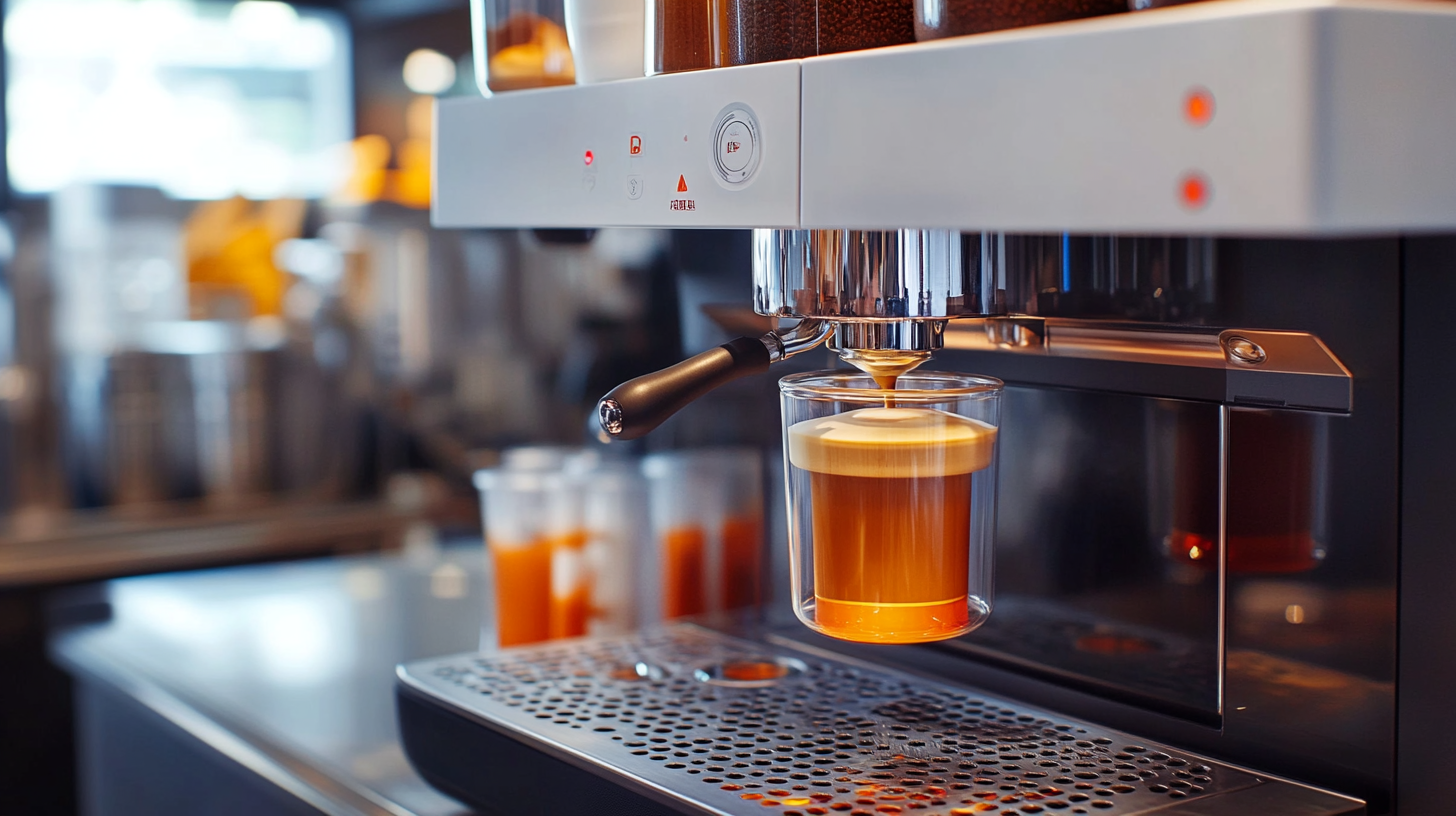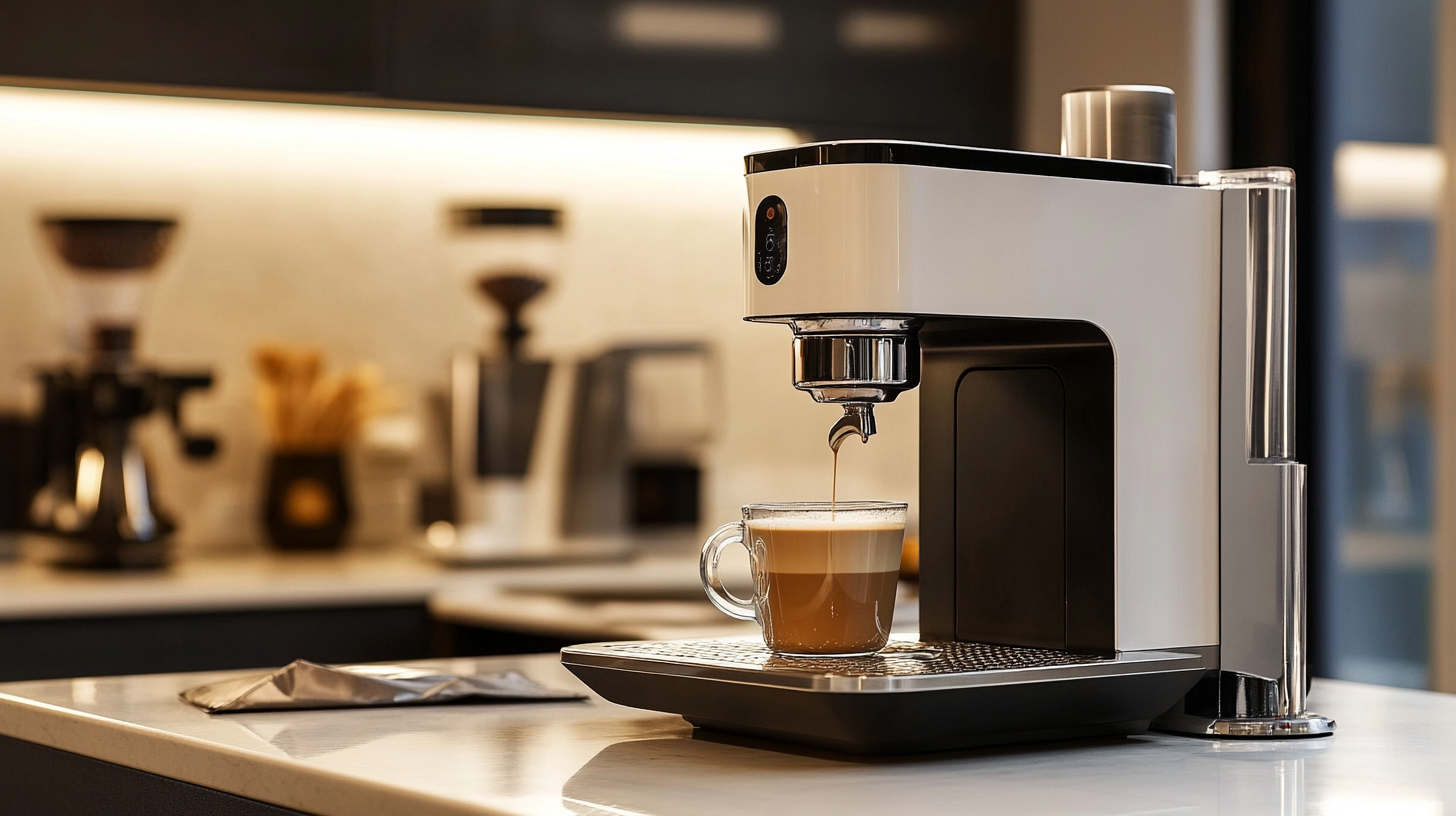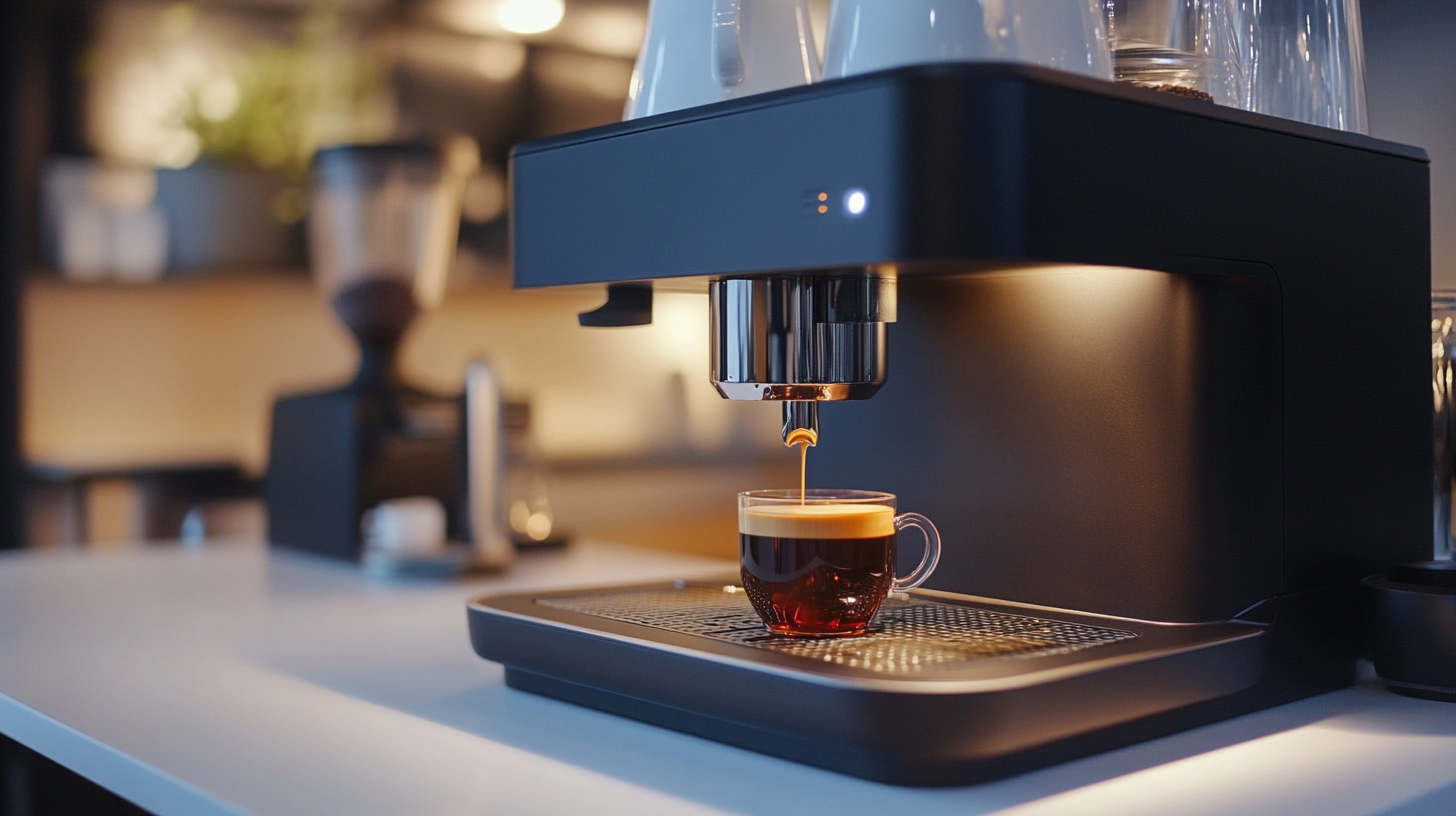Revolutionizing Coffee Experience With Robot Espresso Maker Innovations and Market Trends
In recent time, changes have been brought about in the coffee industry, mainly because of technical advancements and changing consumer preferences. Grand View Research also mentioned that the global coffee machine market is expected to reach a market size of USD 6.8 billion by 2025 and grow at a CAGR of 5.7%. One of the most enthralling innovations that fully capture the spirit of this sector is the Robot Espresso Maker, coming with precision and consistent operation to deliver a fantastic brewing experience. These machines are set to cater to a whole new breed of consumers who are increasingly looking for quality and convenience, whether in commercial establishments or home brewing aficionados.
Coupled with the rise of specialty coffee culture, the Robot Espresso Makers have found plenty of room for attachment. The Specialty Coffee Association reports that more than 49% of consumers for coffee are willing to pay extra for high-quality brews. This demand underlines the need for innovations in brewing technologies that provide café-quality beverages at home. The different trends and innovations surrounding the Robot Espresso Maker point to a great future for this technology, which in turn is looking to revolutionize the coffee industry with the new standards of efficiency and taste, changing the way we have our everyday coffee.

The Rise of Automated Espresso Makers in the Coffee Industry
The coffee industry is profoundly changing under the vanguard of technology and changing consumer demand. The birth of automated espresso makers is changing how coffee aficionados encounter their favorite brews. As discussed in a recent report by Market Research Future, the global automated coffee machine market is projected to grow at 7.4% through the year 2026, strengthening the mechanization trend in the industry. Automated espresso makers serve not only to make coffee making easy; in fact, they provide consistency and precision for the brewing process. For example, machines that have sophisticated pressure and temperature controls allow for creating the perfect shot of espresso time after time. In a survey conducted by the Specialty Coffee Association, 65% of coffee shop owners asserted that high-quality espresso machines improve customer satisfaction and repeat business. These innovations are capturing the eyes of home brewers and are now becoming necessities for cafes wishing to keep their standards high in ever-increasing competition. In addition, the ramp-up of smart technology in espresso makers is improving consumer experience with mobile connectivity and programming features. Statista reports that the global smart home market will exceed $135 billion by 2025, including smart kitchen devices like coffee machines. An obvious trend toward smart appliances, combined with the installation of an easy-to-use interface in automated espresso makers, followed the act of keeping up with current lifestyle needs and cemented its resting place in the coffee industry.

How Robot Espresso Makers Enhance Customization and Consistency
Machines are changing an entire industry-the coffee industry, in this aspect. The whole process of consumption is being altered for the morning cup by these newly engineered robot espresso makers. Current reports state that the expected growth rate of the market for global coffee machines would be 4.6% CAGR between 2021 and 2028. According to that report, the volume in demand is rising in the new innovative coffee solutions for robot espresso making machines that use advanced technology for improving customization and creating consistency among the growing taste for the personalized experience of coffee enthusiasts.
The most significant aspect of robotic espresso machines is their ability to adjust all parameters used during brewing. According to the Specialty Coffee Association, of the coffee drinkers, 67% prefer drinks with a wide variety of customization options to meet their individual taste profiles. Some of the manipulated factors have included grind size, water temperature, and extraction time, which can be varied every time. Thus collaborative control would now be granted to the average user, while previously, control could only be afforded to the expert barista. In this way, every brew would be able to personalize the drink relative to the individual.
The next major advantage of robotic espresso machines is consistency. Different techniques could give different results with traditional methods, annoying even the most patient coffee drinkers. Robot espresso machines use complex algorithms and sophisticated sensors to keep all the cups alike. According to a recent market study, 75% of people cared most about consistency when selecting their coffee machines. This shows that, for most consumers, the assurance of quality was top priority. The future holds excellent promise for such innovations, with the robot espresso-making machine becoming a trend and not just a novelty in modern coffee culture. The focus will be on exceptional coffee experience, satisfying even the most discerning tastes.

Current Market Trends: Consumer Adoption of Innovative Coffee Technology
Experiment has undoubtedly indicated the very bright trend changes being witnessed globally in the coffee machine market today, including China. Manufacturers are learning to improvise with changing consumer preferences. Young consumers increasingly embrace coffee culture, triggering rapid demands for attractive innovations in coffee technology. The more coffee is accepted by young people, the stronger the indication to the market that fertile ground for expansion could indicate possible innovations in coffee machines that can serve as an ideal response to the shifts in consumer demand.
Over the last few years, new revelations have shown that the growth rate in coffee consumption is now around 15% a year, which further establishes it as a very lively industry with massive market potential. Chinese coffee brands like Kudi Coffee are pursuing strategic means to develop considerable market strength among others, proving that companies can use technological advancements along with trends in consumer behavior to improve growth. The arc can keep expanding, but manufacturers need to be very well attuned to these trends in ensuring that their products are keenly adapted to the requirements of tech-savvy consumers in the parameters of convenience and quality.
In addition, the robotic espresso makers are manifesting new horizons in coffee-making, bringing in an entirely new experience for the users, where they can drink at home what is sold in cafes. The whole mechanism combined with automation and easy-to-use interface seems to indicate a trend where consumers enjoy their coffee while at home, especially when post-COVID-19 lifestyles change. In fact, for future development, keeping the emerging trends in consumer technology adoption will be seriously understood in the domain as the coffee community continues to get inumber adjustment with new offerings in the market.

Comparative Analysis: Traditional Espresso Machines vs. Robotics
The culture of coffee preparation is an ongoing saga, especially with the emergence of robotic espresso makers. Traditional espresso machines are venerated and are machines that require a little love and some skill, permitting the artisan behind the counter to manipulate all variables—grind size, amount of grounds, tamping pressure pull, and so on. Rather than being a mere technical job of preparing coffee, there is the benefit of walking between worlds in which flavor and beverage have a connection to the hands which make it. These machines require a lot of skill and knowledge to use, and that is why they mostly become variable based on the skills of the barista.
On the other hand, robotic espresso makers utilize the highest level of technological advancements available in coffee-making equipment in order to guarantee uniformity and precision. Built with advanced sensors and algorithms, these machines can repeat perfect extraction every time, taking manual error out of the equation. They further support functionalities such as remote brewing and customizations for the drink-the kind of customization that appeals to a generation of coffee lovers that grew up on technology. While traditionalists will argue much has been lost in espresso-making, the supporters will argue robotics bring precision and efficiency to the coffee experience.
As lovers of good coffee continue to seek ease and convenience without sacrificing quality, the competition between old and new tech becomes ever relevant. The old machines may confer an admirable ritual in coffee-making, whereas the robot ones engage the minds of those who appreciate innovation and consistency. Ultimately, this evolution in coffee-making changes not only the experience and how we appreciate our espresso but also the change of the coffee culture itself.
Future Innovations: What’s Next for Espresso Automation?
This is the time of the new era where automation in activities has rapidly advanced, and in this change, even the whole field of espresso has been transformed entirely. The new promises across automation in espresso would bring a more miraculous flavor to the entire coffee experience as well as propagate the brewing process. And the most exciting feature that will be seen shortly is the introduction of artificial intelligence in espresso machines. "These intelligent machines will learn user preferences and tweak brewing parameters in real time, making sure that every cup is tailor-fitted with individual taste.
An emerging trend is the use of robots to make the espresso-making process much easier. Grinding beans is always a hassle that takes time. Robotic arms fit the bill and can be designed to do everything from grinding and tamping the coffee to steaming and frothing the milk. They can free a barista from these tasks; thus, minimal human error will lead to a steadier product. In fact, fully automated coffee kiosks would be a reality soon, where a user can make mobile ordering and payment and have his coffee-on-the-road.
Furthermore, sustainability is emerging as a significant force driving modernization in espresso automation. Today, companies are embracing energy efficacy in product designs and morally traded coffee beans as the market shifts toward eco-friendliness. The tide has turned among future customers, but it will now be bigger than the sum of its parts-more than the earth and coffee because they will help define the market-altering behavior of the brands. Continuation of these changes will in one way or the other change the whole human experience in coffee into a more efficient, personalized, and sustainable experience.
